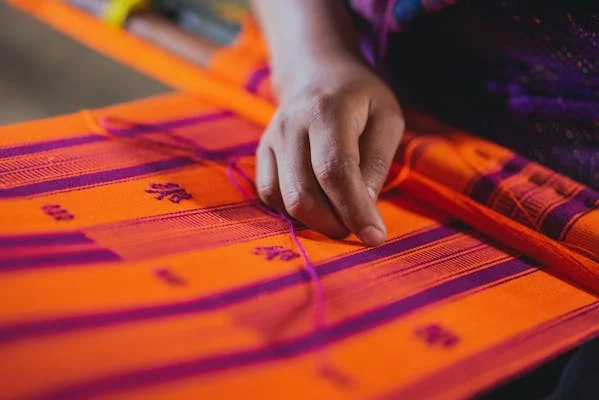What is Tissariss?
Tissariss is a traditional art form that combines weaving and textile arts with deeply symbolic patterns and motifs. Originating in communities that value craftsmanship and storytelling, Tissariss pieces are renowned for their intricacy, use of natural materials, and vibrant colors. Each work of art tells a story, often reflecting cultural beliefs, values, and events.
The Origins and Historical Significance of Tissariss
The roots of Tissariss can be traced back centuries, where artisans used the craft as a form of expression and communication. Originally, Tissariss pieces were woven to commemorate significant life events, honor deities, or convey social status. These artifacts served as historical documents, preserving the stories and customs of their communities.
Techniques in Tissariss Weaving
Tissariss weaving employs a range of intricate techniques, each with a unique style and purpose:
- Hand-Looming: Traditional Tissariss artists use hand-looms to weave fabrics with precision and care, creating symmetrical patterns.
- Knotting and Braiding: To add texture, artisans incorporate knotting and braiding, which give depth and dimension to each piece.
- Twilling and Plaiting: These methods allow for the creation of complex, layered designs, adding a unique character to the textiles.
- Mixed Media Use: Modern Tissaris integrates materials like metal and natural fibers, blending classic and contemporary styles.
These methods showcase the artisans’ skill and give each creation its distinct aesthetic.
Materials and Dyes in Tissariss Creations
Tissariss art is distinguished by its natural materials and dyes:
- Natural Fibers: Commonly used fibers include cotton, silk, and wool, which contribute durability and texture to Tissaris art.
- Plant-Based Dyes: Artisans use dyes derived from plants, roots, and flowers, allowing for eco-friendly, vibrant color palettes.
Natural materials and dyes are integral to Tissaris art, not only enhancing visual appeal but also preserving the environment.
The Cultural Significance of Tissariss Art
Tissaris is more than an art form; it’s a means of cultural preservation. Through intricate patterns and color symbolism, Tissaris art conveys messages about nature, spirituality, and community values. Each design often holds a specific meaning, such as red symbolizing joy and earthy tones representing a connection to the land. This art form fosters pride within communities and serves as a medium for cultural expression across generations.
Symbolism and Storytelling in Tissariss Designs
The patterns and colors in Tissaris art carry deep cultural significance:
- Nature Motifs: Elements like trees, animals, and water are common, symbolizing harmony and the cycle of life.
- Spiritual and Mystical Themes: Many Tissaris pieces incorporate themes of spirituality, with symbols representing balance, growth, and renewal.
- Community and Identity: Artists often use Tissaris as a way to express their personal identity, heritage, and family roles, creating powerful connections to their culture.
Contemporary Innovations in Tissariss Art
As Tissaris evolves, artists are exploring digital tools to expand their creative possibilities:
- Digital Design Integration: Software programs enable artists to create intricate designs that were previously challenging to achieve manually.
- Collaborations with Designers: Many fashion designers incorporate Tissaris elements into their collections, introducing this traditional art to wider audiences.
- Fusion of Traditional and Modern Elements: By blending ancient motifs with contemporary aesthetics, Tissaris artisans ensure the art remains vibrant and relevant.
Sustainable Practices in Tissariss Craftsmanship
Sustainability is a cornerstone of Tissaris as artisans prioritize eco-friendly practices:
- Local Material Sourcing: Using locally sourced materials minimizes environmental impact and supports regional economies.
- Natural Dye Techniques: Tissaris artists favor natural dyes, avoiding harmful chemicals and promoting sustainable craft.
These practices ensure that Tissaris art honors both tradition and environmental responsibility, paving the way for a sustainable future.
Prominent Tissariss Artists and Their Impact
Several renowned artists have made significant contributions to Tissaris such as:
- Anaya Ghosh: Known for her vibrant colors and storytelling, her work captures the essence of Tissaris art.
- Ramesh Kumar: Celebrated for his intricate patterns, Kumar’s work reflects his deep connection to cultural heritage.
These artists inspire new generations, preserving Tissariss traditions while embracing contemporary influences.
Tips for Collectors: How to Appreciate and Preserve Tissariss Art
If you’re interested in collecting Tissaris consider these tips:
- Authenticity Matters: Buy from reputable sources or directly from artisans to ensure genuine craftsmanship.
- Storage and Preservation: Keep textiles out of direct sunlight to avoid fading. Store them flat or rolled in acid-free materials.
- Regular Maintenance: Periodically check for signs of wear and address them promptly to maintain the piece’s integrity.
Conclusion
Tissariss is a timeless art form that celebrates both tradition and innovation. Its vibrant colors, intricate patterns, and meaningful symbolism create a unique connection between the artist and viewer, making each piece a living testament to its culture. As Tissaris continues to evolve with modern influences and sustainable practices, it will remain a cherished art form, resonating with audiences worldwide for generations to come.
Frequently Asked Questions
What is Tissariss?
Tissaris is an art form that blends traditional weaving techniques with modern artistry, known for its intricate patterns and cultural symbolism.
What materials are used in Tissariss?
Tissariss commonly uses natural fibers like cotton and silk and employs plant-based dyes to achieve vibrant, eco-friendly colors.
Why is Tissariss culturally significant?
Tissaris preserves cultural stories and traditions, with each piece reflecting themes of nature, spirituality, and community identity.
How is Tissariss evolving today?
Through digital tools and collaborations with modern designers, Tissariss artists are expanding their craft while honoring traditional techniques.
What are the best practices for preserving Tissariss art?
Store Tissaris pieces in a dark, dry environment and avoid plastic storage to maintain their quality over time.
Where can I purchase authentic Tissariss art?
Look for reputable galleries or directly from established artists known for their craftsmanship in Tissaris.







